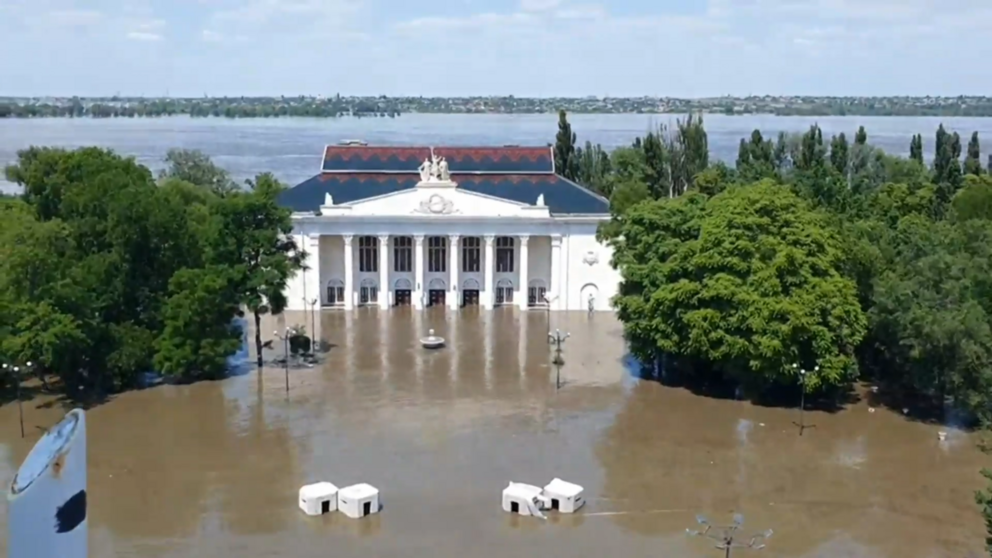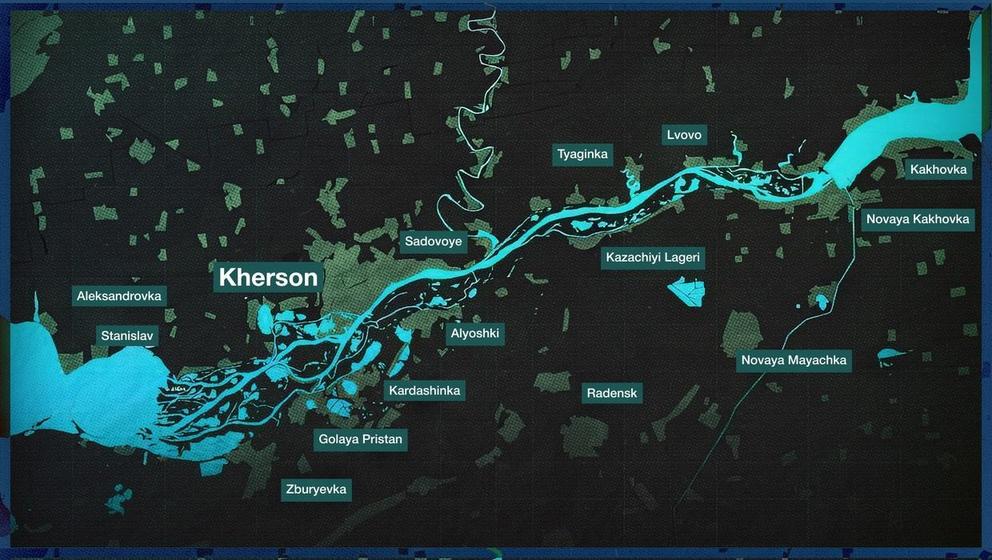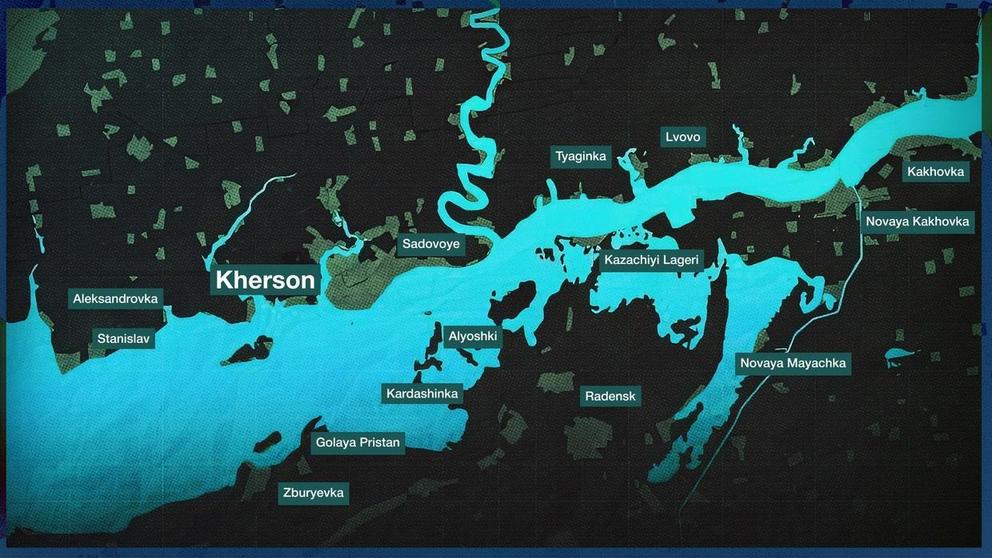Kakhovka dam destruction: What you need to know
Moscow has accused Kiev of an act of deliberate sabotage that put at risk thousands of local residents

© @aakherson / Telegram
A major breach of the Kakhovka hydroelectric dam in Russia’s Kherson Region inundated huge swaths of land on the banks of the Dnieper River, prompting large-scale evacuation efforts in the area. Moscow claimed that the facility was damaged by a Ukrainian strike, while Kiev placed the blame on Russia.
Built in 1956, the 30-meter tall and 3.2-kilometer-long Kakhovka hydroelectric dam contains some 18 cubic kilometers of water, roughly the same volume as the Great Salt Lake in the US state of Utah.
What happened?
On Tuesday morning, Vladimir Leontyev, the mayor of Novaya Kakhovka, a city located close to the dam, said that part of the facility had been destroyed by a Ukrainian strike, which reportedly used a multiple launch rocket system.
Hydroelectric dam in Kherson partially destroyed – mayor
With at least 14 of dam’s 28 spans having collapsed, Leontyev said that the water level in the area had risen by more than ten meters, resulting in the town being flooded. Against this backdrop, the local authorities started evacuating residents from several riverside settlements, with some 300 buildings being vacated.
Russian officials also said that 14 nearby settlements with a total population of 22,000 are at risk of flooding. Meanwhile, Kiev assessed that some 80 towns are now in the danger zone and also ordered evacuations from the towns it currently occupies.
Leontyev stated that the water level will return to normal within 72 hours.
Who is to blame?
Kremlin Press Secretary Dmitry Peskov claimed that the incident “was caused by a deliberate Ukrainian sabotage,” warning of “dire ramifications” for tens of thousands of local residents and the ecosystem.
City of Novaya Kakhovka flooded after dam destruction – mayor
He noted that the sabotage was aimed at cutting the water supply to the Russian Crimea peninsula, adding that the strikes appeared to have been linked to the recent large-scale Ukrainian attacks on the Donbass front, which were thwarted by Russian defenses.
However, Ukrainian President Vladimir Zelensky claimed that the dam was damaged in a Russian “terrorist attack,” while his top aide, Mikhail Podoliak, accused Moscow of staging the “biggest environmental disaster in Europe in decades.” He believes that the incident was meant to throw a wrench in the much-hyped Ukrainian counteroffensive that Kiev has been promising for months.
Numerous Western officials appeared to take Kiev’s side, with European Council President Charles Michel writing on Twitter that “the destruction of civilian infrastructure clearly qualifies as a war crime,” vowing to “hold Russia and its proxies accountable.”
No risk to Zaporozhye nuclear plant
The dam explosion triggered concerns about the situation at Russia’s Zaporozhye Nuclear Power Plant, which is also located on the Dnieper and uses river water to cool its reactors.
However, the UN’s International Atomic Energy Agency (IAEA), which has a constant presence at the facility, assured that there is “no immediate nuclear safety risk at [the] plant,” adding that it is closely monitoring the situation.
Ukraine cuts electricity to Europe’s largest nuclear power plant – official
Still, the agency’s director Rafael Grossi pointed to “a significant reduction in the level of the reservoir used to supply cooling water” to the plant. He did state, however, that the NPP has an alternative water source that is estimated to last for several months.
The largest nuclear facility in Europe, the ZNPP came under Russian control in February 2022. Since then, Moscow and Kiev have accused each other of shelling the facility, with each claiming that the other’s actions could trigger a nuclear disaster. Zaporozhye Region became part of Russia following a referendum in September 2022, together with Kherson Region and the two Donbass republics.
Impact on Crimea
Sergey Aksyonov, the governor of the Russian peninsula, stated that while the incident at the Kakhovka dam won’t cause any flooding in Crimea, it may lead to a decreased water level in the North Crimea Canal, which serves as a key water source.
Still, he emphasized that the local water reservoirs are filled to 80% of their capacity, adding that “there is more than enough drinking water” and that efforts were underway to minimize the losses.
Before:

© vestovoi / Telegram
After:

© vestovoi / Telegram
